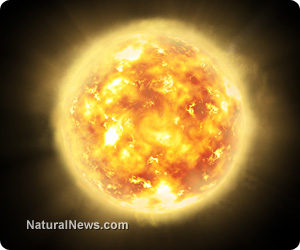
NaturalNews) Increasingly, because of hyperactivity, scientists believe that high-speed eruptions of super-charged particles from the sun may someday cause increasing problems and failures in the signals from satellites we rely on to watch TV, use the Internet and communicate.
Solar flares, coronal mass ejections and other space weather events generated by the sun, though some 93 million miles (150 km) away, can send highly energized particles speeding towards Earth. These "solar storms" have, in the past, been blamed for disrupting communications systems and damaging satellites.
Researchers believe the charged particles could have accumulated in the satellites over a period of time. And, despite the satellites' protective shielding, that buildup most likely caused some internal charging which, in turn, damaged the satellites' amplifiers, which are necessary in order to relay signals back to earth. Over the course of extended missions, the researchers warn this phenomenon could lead to a failure of the satellites' backup amplifiers as well.
The thing about space weather is that it often resembles weather on Earth - it's not very predictable. And, say researchers, space weather can be much more reactive than what is often predicted by models utilized by engineers who design satellites, according to Kerri Cahoy, one coauthor of the study and an assistant professor of aeronautics and astronautics at MIT.
The report about extreme space weather from the Royal Academy of Engineering in London said major solar super storms generally occur, on average, once every 150-200 years. The group went on to note that the last major solar storm took place in 1859, long before the establishment of modern electrical grids and a century before space travel and satellites.
No comments:
Post a Comment